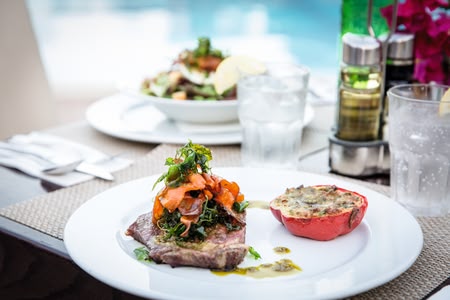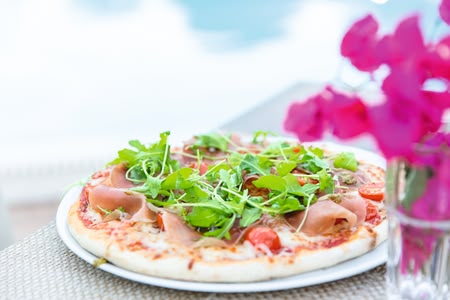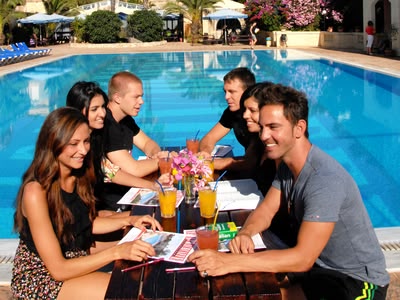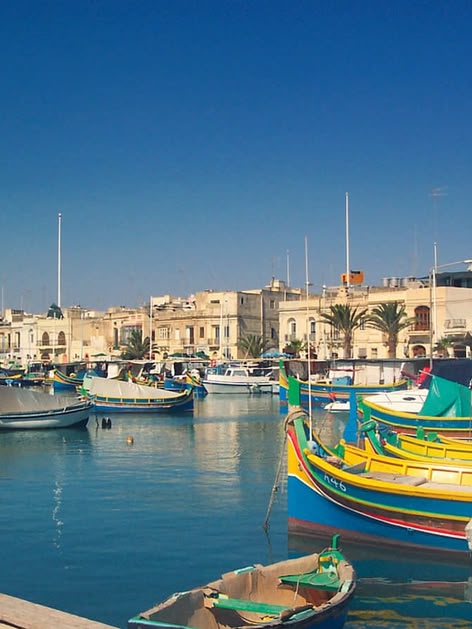Malta's Culinary Delights - Top Dishes You Must Try
What Makes Maltese Food Unique?


Maltese cuisine is so special and unique because it has been shaped by many influences over the years, while simultaneously maintaining a wonderful culinary tradition that continues to this day. Here are the cultures that particularly influence Maltese cuisine:
Mediterranean influences: As an island in the Mediterranean, Malta naturally benefits from Mediterranean influences. Therefore, typical Mediterranean ingredients such as fish, olive oil, tomatoes, and a wide variety of herbs feature prominently in Maltese dishes.
Arab influences: The geographical proximity to North Africa and the Arab world also results in a strong influence from Arab cultures. Spices such as cinnamon, cloves, and nutmeg, as well as Arab pastries, clearly demonstrate the Arab influence on Maltese food. The best example of this is the Maltese dish Imqaret, a deep-fried pastry with date paste.
Sicilian influences: The cuisine of Italy, so popular worldwide, also plays a role in Maltese dishes. The nearby island of Sicily, in particular, has a significant culinary influence on Malta. This is particularly evident in the use of typical Sicilian pasta, seafood, sweets, and wine.
British influences: During their rule in Malta (1800-1964), the British not only left behind the English language. Many typically British dishes, such as pies, cheddar cheese, and the famous British afternoon tea, remain part of Maltese culture and culinary landscape to this day.
All of these influences on Maltese food complement the wonderful traditional cuisine of the Maltese archipelago, which has been passed down from generation to generation for centuries. Now, let's take a look at some of Malta's most popular dishes.
Must-Try Traditional Maltese Dishes for an Authentic Food Experience
As you've already read, Maltese cuisine has a multitude of influences from diverse cultures around the world. These influences, combined with Maltese traditions, are naturally reflected in Malta's national dishes.
Below, we'll show you the most popular Maltese national dishes that you absolutely must try at least once in your life. The best way to experience them is to travel to Malta and enjoy them in a lovely restaurant with a Maltese atmosphere.
Pastizzi: For Breakfast or as a Snack
Pastizzi is a savory pastry that is typically eaten for breakfast in Malta. However, it is also frequently served as a snack. The traditional filling is either mushy peas or ricotta cheese. You can choose between these two fillings. You can find pastizzi almost everywhere in Malta.
Lampuki: For Fish Lovers
Lampuki, a Maltese fish dish, is typically served with vegetables or a fresh salad. The name comes from the Lampuki fish, which is caught fresh in Maltese waters. This makes it a unique fish dish that you can only enjoy in Malta.
Bragioli: For Meat Lovers
This delicious meat dish is a beef roulade filled with garlic, onions, and parsley, then braised in the oven with a flavorful tomato sauce. Don't miss out on this tasty dish during your holiday in Malta.
Ftira: Topped Flatbread
This wonderful Maltese dish is similar to Italian pizza. The base is a flatbread originating in Malta, which is usually a bit thicker than typical Italian bread. The flatbread is topped with a choice of olive oil, tomato, tuna, capers, and many other delicious ingredients from Maltese cuisine.
Kunserva: Delicious Bread Spread
This Maltese national dish showcases the influence of Italian cuisine. Kunserva is a tomato paste primarily used as a spread for crusty bread. Only sun-ripened tomatoes grown in Malta are used in its production. If you try Kunserva in Malta, you can expect a sweet yet spicy flavor.
Imqaret: Maltese Dessert
The dish Imqaret showcases the Maltese blend of different cultures. The typically Arabic date paste and the ruffled pastry are usually enjoyed with a cup of tea during British teatime. Imqaret is a typical dish that is often eaten as a dessert in Malta.
Gbehniet: Cheese Balls in Brine
Gbehniet are small cheese balls, either fresh or preserved in brine. They are made from either goat's milk or sheep's milk and are therefore quite similar to the more familiar feta. These delicious cheese balls are often eaten as an appetizer or side dish in Malta. Gbehniet also goes very well in a salad.
The Best Places to Eat in Malta
Malta boasts a wide variety of restaurants worth visiting. If you'd like to savor typical Maltese cuisine, the following places are the perfect choice for you.
Valletta: Malta's capital city boasts a wide selection of traditional restaurants. It's best to choose one and combine your stay in Valletta with a visit to a typical Maltese restaurant.
Mdina: The old capital of Malta is not only the filming location for many series and films, such as Game of Thrones, but also a suitable place in Malta to taste the delicious food in Malta.
St. Julian's: The St. Julian's district is one of Malta's most popular tourist destinations. Besides typical Maltese restaurants, you'll also find plenty of restaurants serving seafood, Italian cuisine, or even sushi. What makes St. Julian's special is that almost every restaurant offers a breathtaking view of the Mediterranean Sea.
Marksaxlokk: This small fishing village in southern Malta is the perfect place for lovers of fish and seafood. The ingredients for the Maltese dishes come fresh from the Mediterranean and are immediately prepared into traditional Maltese dishes.
Conclusion: Malta is a Culinary Delight!

As you've learned here, Maltese cuisine offers a great deal of variety. Besides meat and fish dishes, delicious bread is also a staple in Maltese cuisine. All these tasty dishes in Malta are always prepared with regional and very fresh ingredients. Therefore, you're sure to find something to your liking when it comes to food in Malta.
Do you fancy a trip to Malta and enjoying all those wonderful dishes? Then why not combine it with something worthwhile like an English language course? Your language trip to Malta will give you the perfect foundation to enjoy all the beauty of Malta. Plus, you can immediately put your newly acquired English skills to the test when you visit Malta's restaurants.




